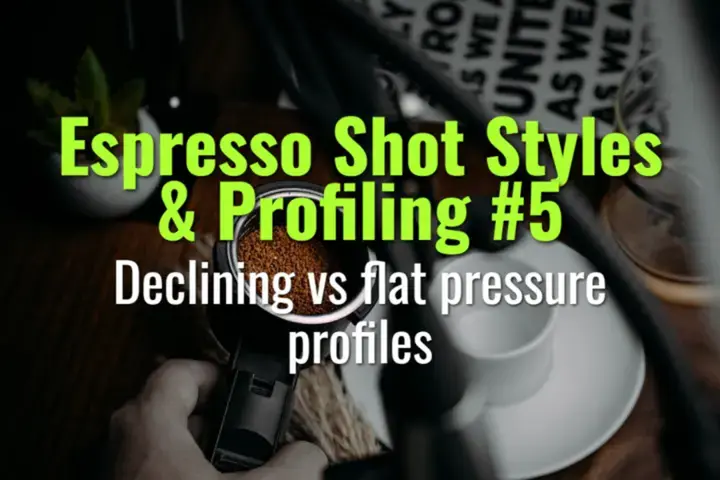Declining vs flat pressure profiles
The differences between declining and flat pressure profiles in espresso, and how they influence extraction dynamics and flavor outcomes.
- Coffee Basics Nerds
- 1 min read
Article 5 of 12 in Espresso Shot Styles & Profiling/

Flat Pressure Profile
- Definition: Constant pressure (typically 9 bar) applied throughout extraction.
- Characteristics:
- Consistent flow.
- Reliable and repeatable results.
- Traditional Italian method.
- Flavor Impact:
- Dense body, crema-rich, slightly more bitterness.
- Works well with medium-dark roasts.
Declining Pressure Profile
- Definition: Pressure starts high (8–9 bar) and decreases gradually over extraction (down to 4–6 bar).
- Characteristics:
- Mimics classic lever machines.
- Slows flow as puck erodes, reducing channeling risk.
- Allows higher extraction without bitterness.
- Flavor Impact:
- More clarity and sweetness.
- Reduced astringency.
- Highlights delicate notes in light roasts.
Comparison
| Aspect | Flat Profile | Declining Profile |
|---|---|---|
| Consistency | High | Medium–High (requires precision) |
| Ease of Use | Simple | More complex to dial in |
| Flavor Style | Bold, syrupy | Bright, nuanced |
| Best Use | Traditional, milk drinks | Light roasts, straight espresso |
Practical Applications
- Flat Profile: Best for cafés prioritizing speed, tradition, and consistency.
- Declining Profile: Specialty shops highlighting terroir and lighter coffees.
Summary
A flat pressure profile emphasizes body, crema, and tradition, while a declining profile offers sweetness, clarity, and reduced harshness. Choosing between them depends on roast style, café goals, and desired sensory outcomes.